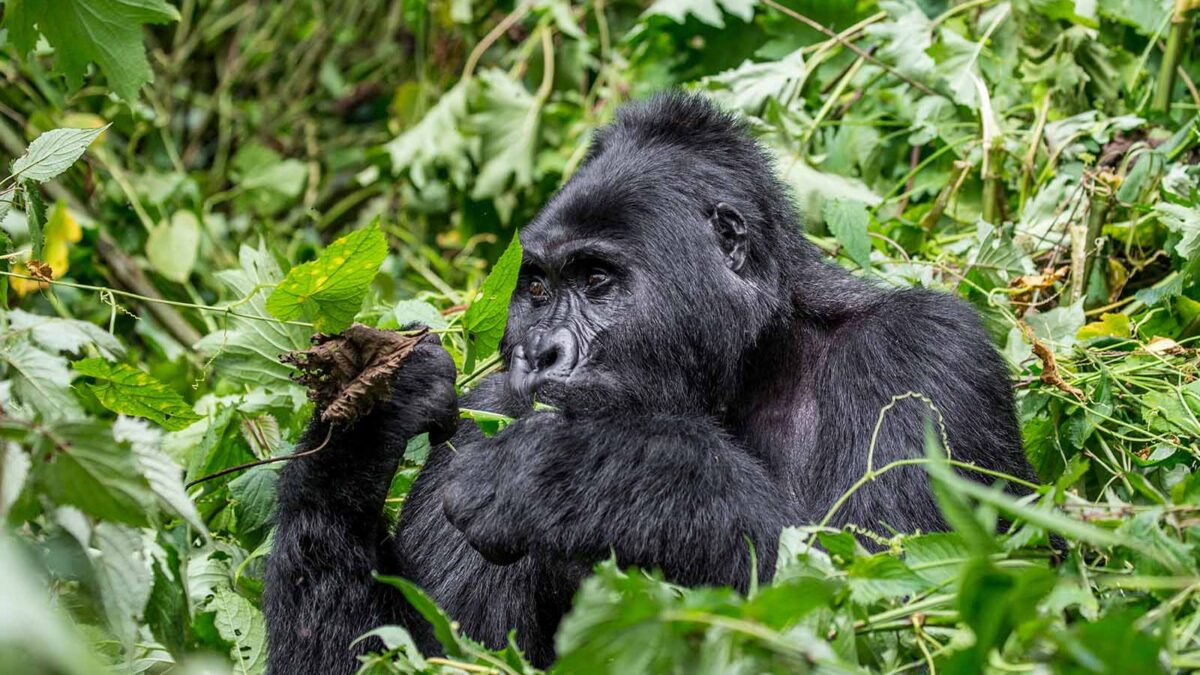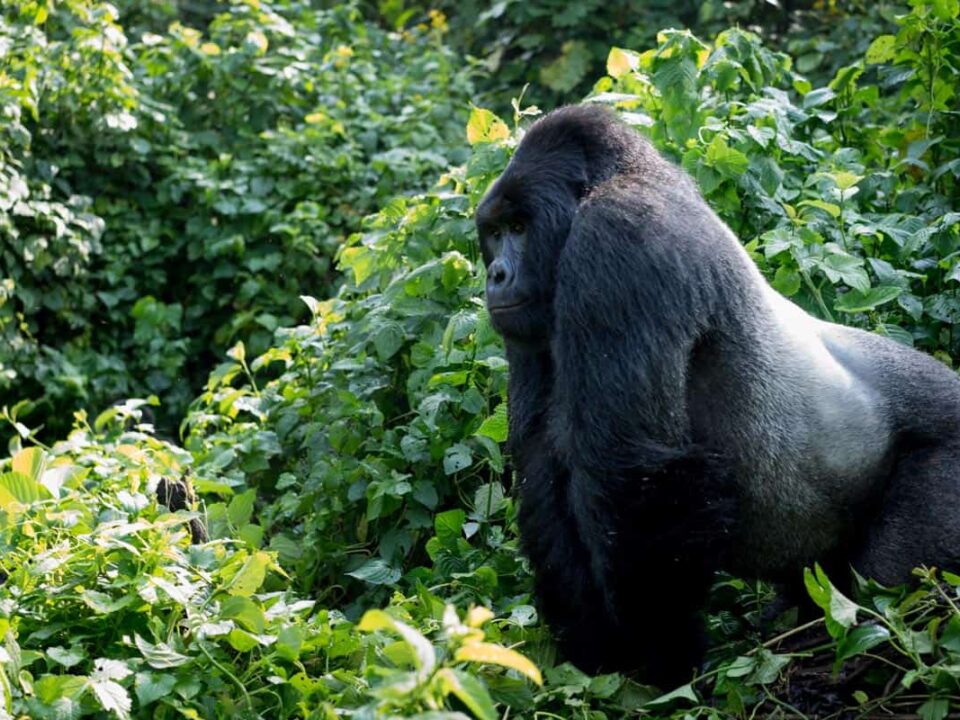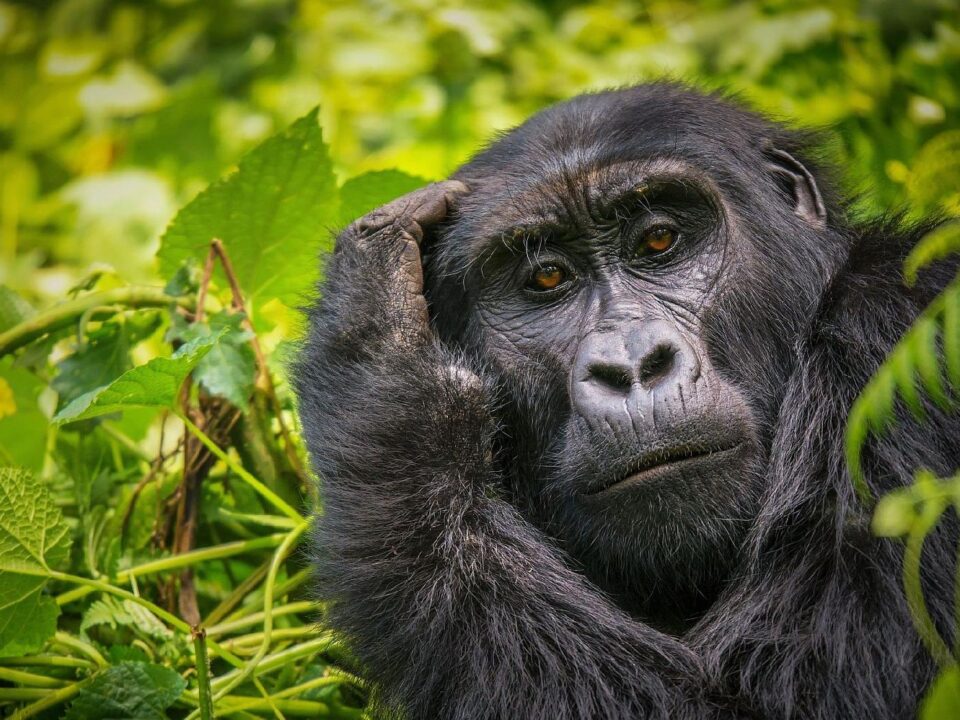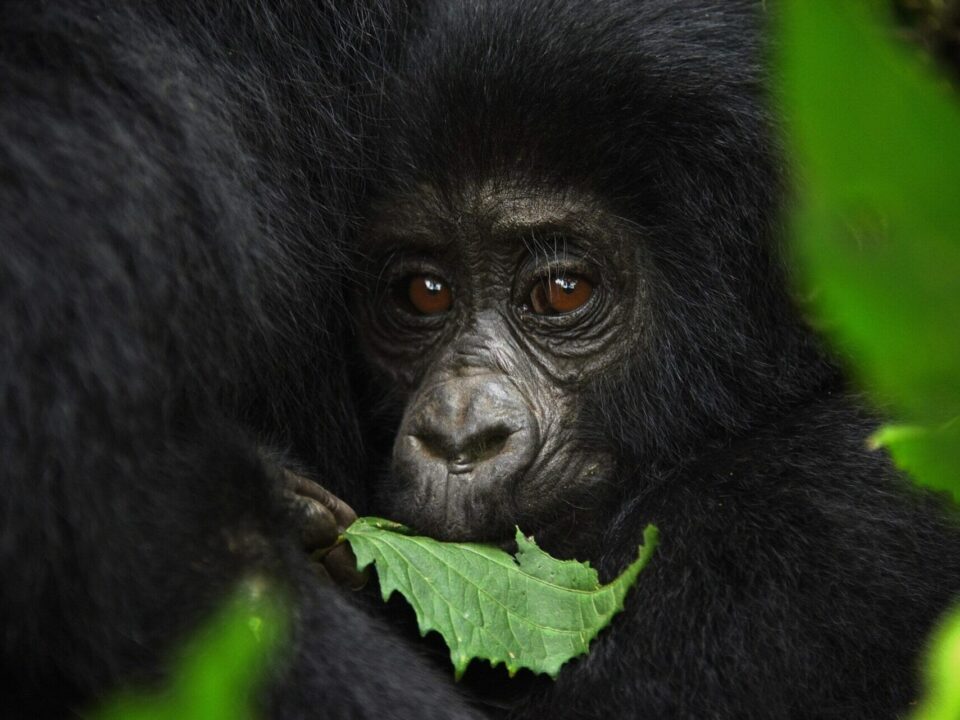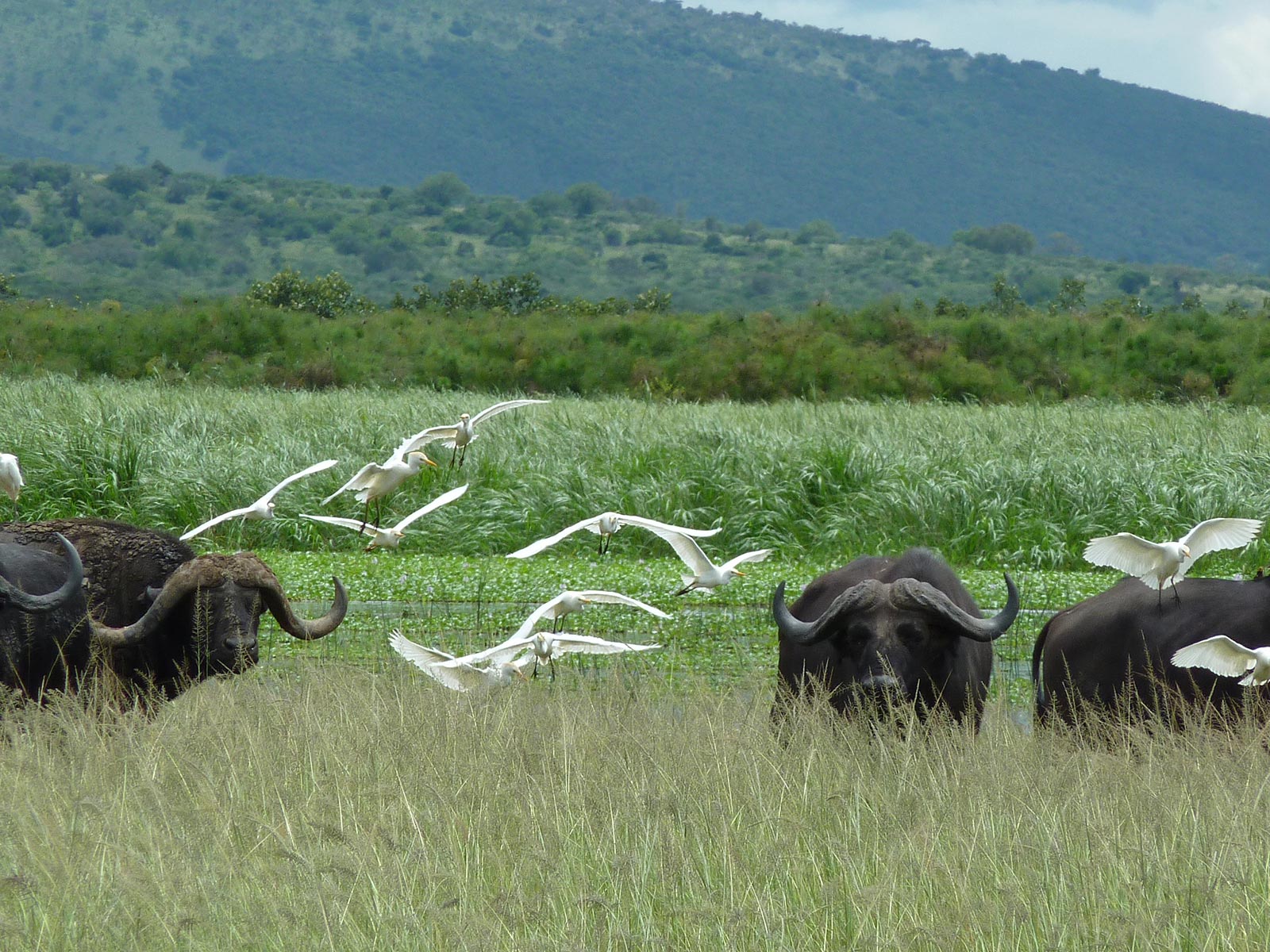
What to Expect on Safari in Rwanda
July 17, 2023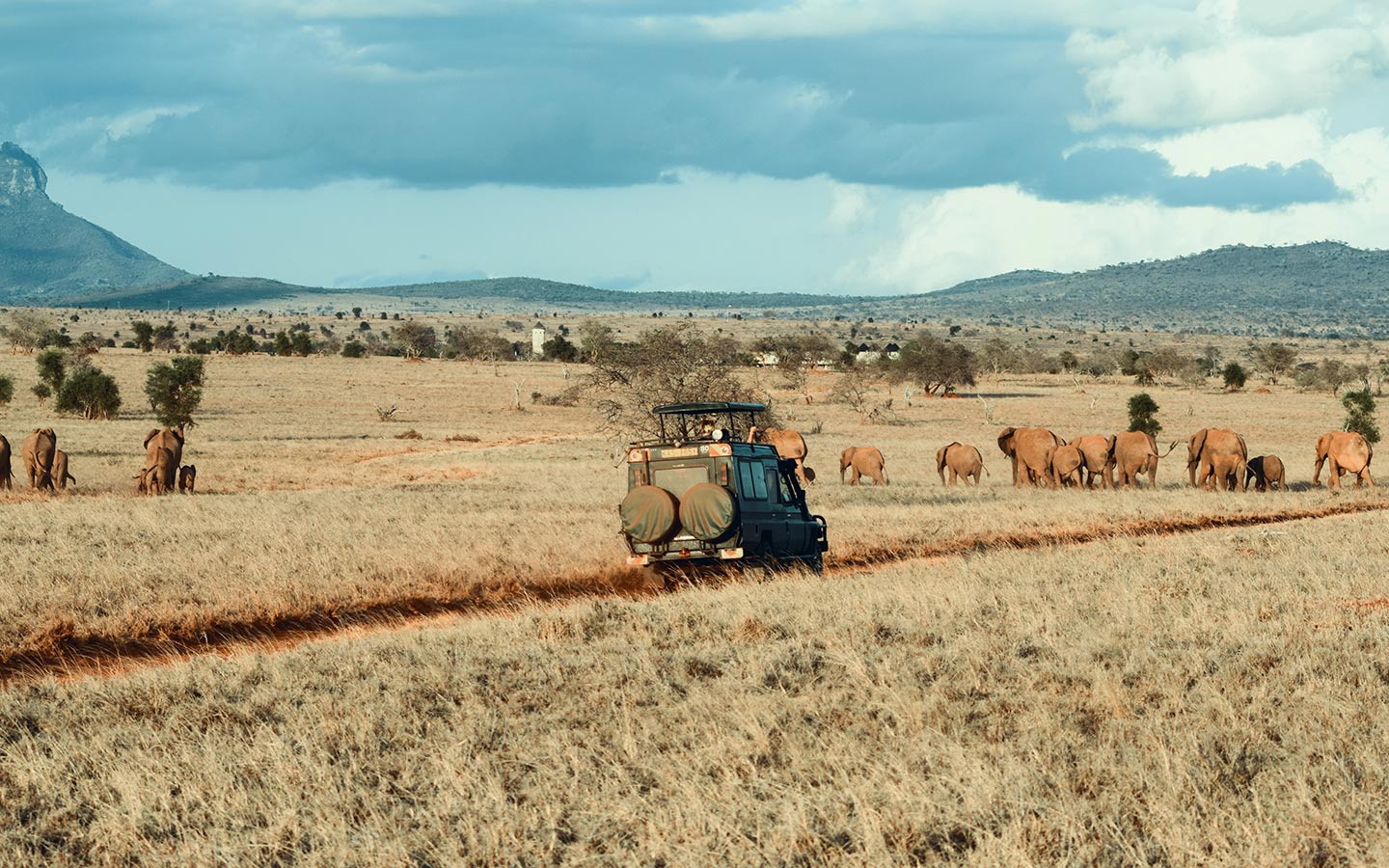
Best Place for a Night Game Drives & Walks in Uganda.
July 17, 2023The Home of Mountain Gorillas: Exploring Africa’s Unique Habitat
When it comes to mountain gorillas, Africa holds the exclusive privilege of being the only continent where these magnificent creatures exist in their natural habitats. Often referred to as the “Cradle of Man,” Africa boasts a diverse array of primate species. However, it was on October 17th, 1902, that science first discovered the existence of mountain gorillas as a subspecies of eastern gorillas. These gentle giants live in family units, led by an adult male known as a silverback. Adult males earn their name from the silvery hair that develops on their backs and hips as they mature. Silverbacks can weigh up to 160 kg, while female mountain gorillas can weigh up to 98 kg. A typical gorilla family consists of a silverback, female gorillas, juveniles, and some black backs.
Which Countries Are Home to Mountain Gorillas in Africa?
Not all African countries serve as habitats for the rare and endangered mountain gorillas. These great apes can only be found in East and Central African countries, namely Uganda, the Democratic Republic of Congo, and Rwanda. These countries provide favorable conditions that support the existence of mountain gorillas. The Virunga mountain range, which spans across the borders of Uganda, Rwanda, and the Democratic Republic of Congo, features high-altitude areas ranging from 2,500 to 4,000 meters. These areas are characterized by forests and bamboo forests, which serve as ideal homes and sources of food for mountain gorillas. Additionally, Bwindi Impenetrable National Park in Uganda is predominantly a tropical rainforest, abundant with shrubs and trees that provide nourishment for these majestic creatures.
Which National Parks in Africa Are Home to Mountain Gorillas?
Mountain gorillas in Africa can be found in four national parks located in three countries: Rwanda, the Democratic Republic of Congo, and Uganda. Within these countries, three national parks are situated in the Virunga region, encompassing a cluster of extinct volcanoes that straddle the borders. These national parks are Volcanoes National Park in Rwanda, Virunga National Park in the Democratic Republic of Congo, Bwindi Impenetable National Park and Mgahinga Gorilla National Park in Uganda. Although these three national parks share the same forest, they are divided by colonial boundaries. The remaining population of mountain gorillas is found in Bwindi Impenetrable National Park in Uganda.
How Many Mountain Gorillas Exist in Africa?
The current population of mountain gorillas in Africa stands at 1,004 individuals, a remarkable increase from the 620 individuals recorded in 1989. This growth can be attributed to dedicated conservation efforts and meticulous monitoring that have been in place since the 1950s. Out of the total population, approximately half can be found in Bwindi Impenetrable National Park, while the rest are distributed among the three national parks in the Virunga region.
What Threats Do Mountain Gorillas Face in Africa?
Habitat Loss:
The tropical and bamboo forests that serve as the natural habitat for mountain gorillas are gradually diminishing due to population growth in Rwanda, Uganda, and Congo. An estimated 150,000 people reside in the vicinity of the Virunga range and Bwindi Impenetrable National Park, where mountain gorillas reside. The demand for land for agriculture and settlement has resulted in encroachment on these forests in high-altitude areas. For instance, in 2024 alone, over 1,500 hectares of prime mountain gorilla habitat in Virunga National Park, Democratic Republic of Congo, were cleared by illegal settlers. Such encroachment poses a significant threat to the survival of these rare great apes.
Illegal Hunting:
Mountain gorillas, like many other wildlife species, face the threat of illegal hunting for meat and trophies. During the Rwanda genocide from 1990 to 1994, when people fled their homes to seek refuge, the Virunga National Park in the Democratic Republic of Congo became a temporary settlement, leading to poaching, bush burning, and tree cutting. Unfortunately, this resulted in the loss of numerous mountain gorilla habitats and the tragic deaths of several gorilla families.
Oil and Gas Exploration:
The exploration of oil and gas in the Albertine Rift Valley and the Virunga range poses a potential threat to mountain gorilla habitats in Uganda, Rwanda, and the Democratic Republic of Congo. These activities may disrupt their natural environment and further jeopardize their survival.
Wars and Political Insecurity:
The Virunga National Park in the Democratic Republic of Congo has been particularly affected by wars and political insecurity. The Rwanda wars of 1990-1994 and the ongoing presence of armed rebel groups in Eastern Congo have resulted in the loss of many mountain gorillas and posed ongoing dangers to their population.
Human Diseases:
Mountain gorillas are closely related to humans, and as a result, they are susceptible to diseases transmitted by humans, such as the flu and cough. This vulnerability puts them at risk, particularly in regions where tourism and human-gorilla interactions occur.
Which National Park in Africa Has the Highest Number of Mountain Gorillas?
According to the most recent census conducted two years ago, Bwindi Impenetrable National Park boasts the highest number of mountain gorillas in Africa. This national park is home to over half of the total population of mountain gorillas in Africa and the world. The joint conservation efforts of various stakeholders, including the Uganda Wildlife Authority, have played a vital role in protecting these incredible creatures and fostering population growth.
Which National Park in Africa Has the Most Habituated Mountain Gorilla Families?
Bwindi Impenetrable National Park is home to the highest number of both habituated and non-habituated mountain gorilla families. Over 19 gorilla families have been habituated and are open for gorilla trekking. While Volcanoes National Park in Rwanda is home to 10 gorilla families, it’s important to note that only 10 of these families are available for gorilla trekking, while the rest are reserved for research purposes. For further information on this matter, please contact Trek Africa Expeditions.
Which Countries Are Safe for Gorilla Trekking in Africa?
When considering the safety of gorilla trekking, both Uganda and Rwanda are considered safe nations to visit. These countries have enjoyed relative stability, with no reported attacks on tourists participating in gorilla trekking activities. On the other hand, the Virunga National Park in the Democratic Republic of Congo faces ongoing insecurity due to rival factions and rebel groups in the Eastern Congo region. Unfortunately, rangers and tourists have been casualties of violence during gorilla trekking excursions in the Virunga forests, making it an unsafe destination. Trek Africa Expeditions primarily operates in Uganda and Rwanda, ensuring safe and memorable gorilla trekking experiences for our clients.
Which African Country Offers Affordable Gorilla Trekking Experiences?
In terms of affordability, the Democratic Republic of Congo stands out as the most cost-effective option for gorilla trekking on the African continent. A gorilla permit in Congo costs $400 per person, which is significantly lower than the permit prices in Uganda (USD800) and Rwanda ($1,500) respectively. However, it’s important to note that the Democratic Republic of Congo faces security challenges, making it an unsafe option for gorilla trekking. Therefore, Uganda remains the most affordable and secure destination for gorilla trekking, offering exceptional value for money. Trek Africa Expeditions has a wealth of experience in organizing affordable gorilla trekking safaris in Uganda and Rwanda, ensuring unforgettable adventures for our clients.
Which African Country Provides More Time with Mountain Gorillas?
Gorilla trekking is an extraordinary and expensive experience, and many visitors wish to spend more time with habituated mountain gorillas. In this regard, Uganda surpasses Rwanda and the Democratic Republic of Congo. Uganda offers the unique opportunity of a gorilla habituation experience, where visitors can spend up to four hours in the presence of mountain gorillas. Rwanda and the Democratic Republic of Congo, on the other hand, limit the encounter to the standard one-hour trek. For more information on gorilla habituation experience safaris, please contact us.
How to Choose the Best Country in Africa for Gorilla Trekking
Selecting the best country in Africa for gorilla trekking requires careful consideration, taking into account your interests and budget. While there is an abundance of information available online, it is highly recommended to book your gorilla trekking experience through a registered and licensed tour operator in Uganda or Rwanda. These tour operators can provide expert advice, address all your questions and concerns, and ensure a seamless booking process. They will offer affordable packages and reliable information to make your gorilla trekking experience truly exceptional. If you’re looking for luxury, Rwanda is the ideal destination with its high-end infrastructure and accommodations. Alternatively, if safety and affordability are your priorities, Uganda offers a secure and cost-effective option. Trek Africa Expeditions operates in both Uganda and Rwanda, and our experienced team is dedicated to providing outstanding gorilla trekking experiences. Contact us today for the best-value gorilla safari packages.

